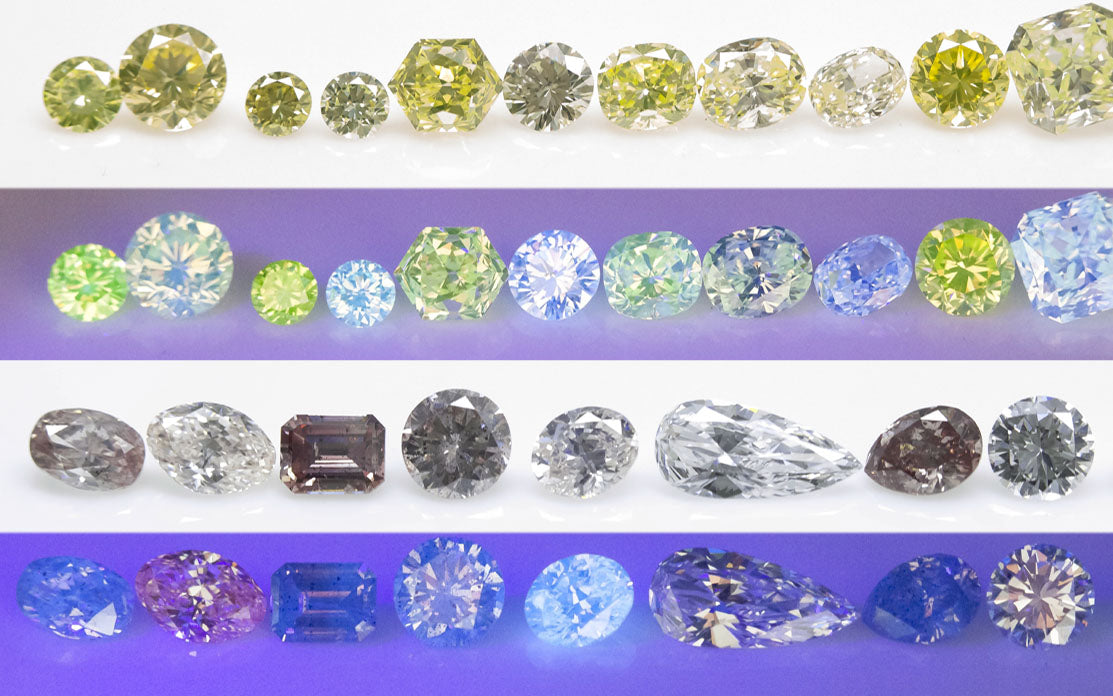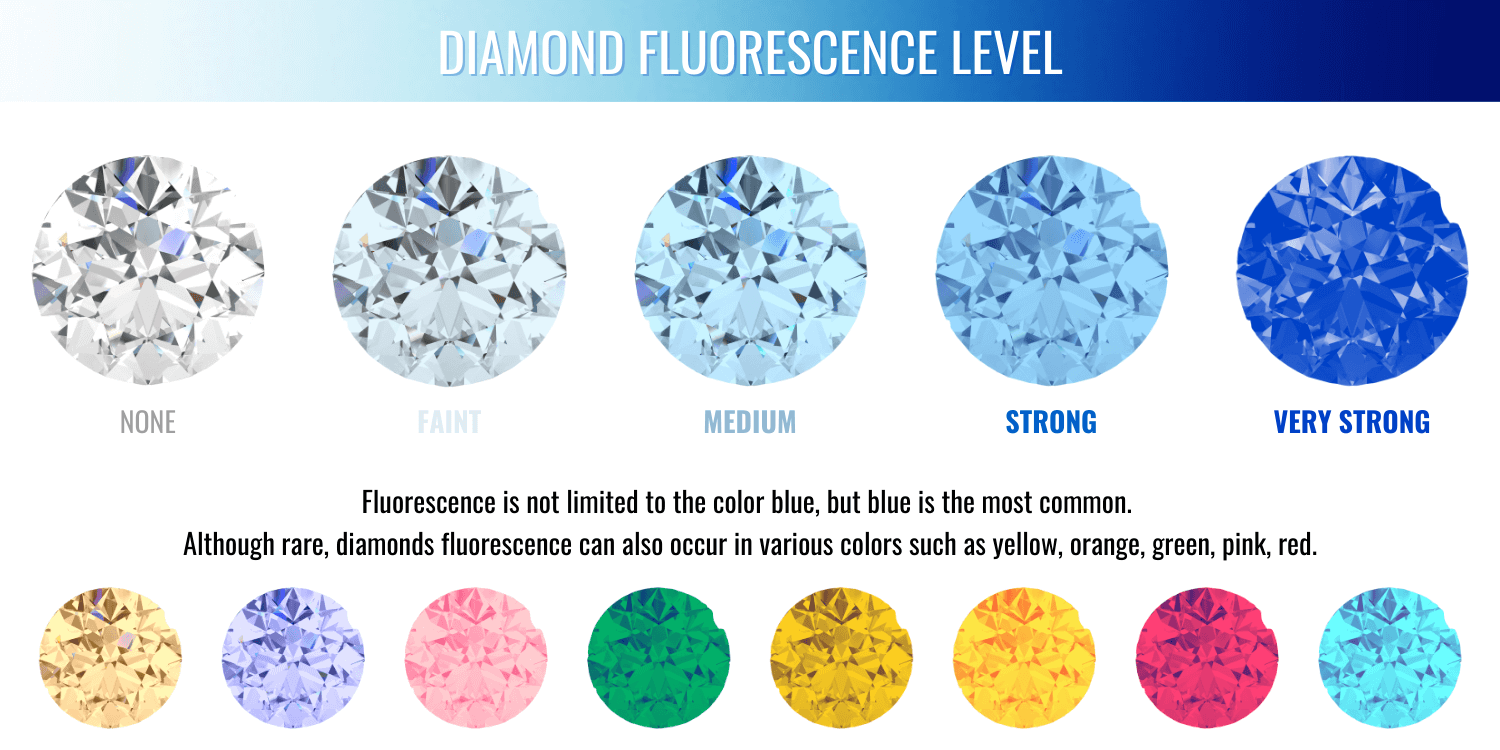Introduction
Diamonds have long been considered a symbol of timeless beauty and elegance. Among the key attributes that define a diamond’s value and allure, color and fluorescence are often misunderstood or overlooked, especially when examined together. The combination of a D color grade—the highest possible on the diamond color scale—with strong fluorescence presents a fascinating study in gemstone aesthetics, market value, and buyer perception. In this comprehensive guide, we delve into the world of strong fluorescence D color diamonds, uncovering their unique chemistry, visual impact, and place in the modern jewelry market.
Understanding Diamond Color: What Does D Color Mean?
The GIA Color Grading Scale
The Gemological Institute of America (GIA) developed a standardized scale for grading diamond color, ranging from D (colorless) to Z (light yellow or brown). D color represents the purest, most colorless grade possible, often reserved for the most prestigious and high-end diamonds.
Significance of D Color Diamonds
D color diamonds are extremely rare, comprising a small fraction of all diamonds mined. Their lack of color allows them to reflect light with exceptional brilliance. These diamonds are typically set in platinum or white gold to maintain their icy white appearance and are highly sought after for engagement rings and luxury jewelry.
What Is Diamond Fluorescence?
Definition and Types of Fluorescence
Fluorescence in diamonds refers to the visible light emitted when the stone is exposed to ultraviolet (UV) light. Approximately 25% to 35% of diamonds exhibit some degree of fluorescence. The GIA categorizes fluorescence intensity into five levels:
- None
- Faint
- Medium
- Strong
- Very Strong
Common Fluorescent Colors
The most common fluorescence color is blue, which often complements diamonds by neutralizing yellowish tones. Other rare fluorescent colors include white, green, and orange, but these are extremely uncommon.
The Unique Combination: Strong Fluorescence and D Color
Rarity of the Combination
While both D color and fluorescence are individually common subjects in gemology, their combination is less frequently seen. D color diamonds typically undergo stringent sorting, and those with strong fluorescence are often filtered out before hitting the high-end market.
Chemical and Structural Reasons
The presence of fluorescence in diamonds is primarily due to trace elements, such as nitrogen or boron, within the crystal structure. Since D color diamonds are more chemically pure, it’s unusual for them to exhibit strong fluorescence. When they do, it creates a visually and scientifically interesting anomaly.
How Strong Fluorescence Affects Appearance
Under Normal Lighting
In most lighting conditions, a strong fluorescence D color diamond appears virtually identical to one without fluorescence. However, in direct sunlight or under UV-rich environments (such as nightclubs or daylight), the diamond may exhibit a blue glow.
Under UV Light
When exposed to UV light, the fluorescence becomes visible, creating a glowing or hazy effect. In D color diamonds, this can sometimes soften the stark white appearance, lending a unique charm that some buyers find appealing.
The Debate: Is Fluorescence Good or Bad?
Pros of Strong Fluorescence in D Color Diamonds
- Unique Aesthetic Appeal: The blue glow can add an ethereal, mysterious quality.
- Price Advantage: These diamonds are often sold at a discount compared to non-fluorescent counterparts, despite having the same grade.
- Rarity and Individuality: Owning a D color diamond with strong fluorescence is a statement of individuality.
Cons of Strong Fluorescence in D Color Diamonds
- Potential Hazy Appearance: Some diamonds may appear oily or cloudy under intense UV light.
- Market Perception: There remains a stigma in the market, especially among traditional buyers and jewelers.
- Limited Resale Value: Resale can be more challenging due to buyer misconceptions.
Market Trends and Pricing
Price Discounts
Diamonds with strong fluorescence often receive price reductions of 5% to 15% depending on market conditions. However, for savvy buyers, this presents an opportunity to acquire a top-tier D color diamond at a relatively lower cost.
Shift in Consumer Awareness
Modern consumers, especially millennials and Gen Z, are more open to unique and unconventional characteristics in gemstones. As educational resources and transparency increase, fluorescence is becoming less of a deterrent and more of a personal preference.
Influence of Online Retail
E-commerce platforms like Blue Nile, James Allen, and Brilliant Earth offer high-definition video and fluorescence information, allowing buyers to make informed decisions. This transparency has helped reduce the negative bias against fluorescence.
Jewelry Settings and Design Considerations
Metal Color Pairing
D color diamonds with strong fluorescence are best set in metals that enhance their cool tone:
- Platinum: Enhances brilliance and emphasizes the icy quality.
- White Gold: Adds warmth while maintaining the diamond’s clarity.
Design Tips
- Avoid overly intricate settings that could trap UV light and exaggerate the fluorescent effect.
- Halo settings can add extra sparkle, complementing the glow.
Real-Life Examples and Testimonials
Case Study 1: Engagement Ring Selection
Emily, a New York-based graphic designer, chose a D color diamond with strong fluorescence for her engagement ring. “I wanted something unique, and the subtle glow in the sunlight made it feel magical,” she said.
Case Study 2: Collector’s Perspective
James, a gem collector from London, actively seeks out D color diamonds with fluorescence. “They’re misunderstood treasures,” he says. “I see them as nature’s quirks—beautiful and rare.”
Professional Insights
What Gemologists Say
Most gemologists agree that fluorescence is not inherently good or bad. According to GIA research, in the majority of diamonds, even strong fluorescence does not affect transparency or brilliance.
Retail Recommendations
Reputable jewelers recommend seeing the diamond in person or requesting detailed video before purchase. If the fluorescence does not affect the appearance under normal conditions, it should not be considered a flaw.
Conclusion: A Choice of Personal Brilliance
D color diamonds with strong fluorescence occupy a niche in the gemstone world that combines rarity, beauty, and controversy. While traditional buyers may hesitate, modern consumers see potential in their uniqueness. With greater awareness and evolving market perceptions, these diamonds are poised to shine not only under UV light but also in the hearts of those who value individuality.
Rather than viewing fluorescence as a flaw, it can be embraced as an added layer of personality—a hidden brilliance that only reveals itself in the right light. For those who dare to be different, a strong fluorescence D color diamond offers a story worth telling and a glow worth sharing.
FAQs
1. Does strong fluorescence reduce the value of a D color diamond?
It can affect market price due to buyer perception, but not necessarily because of actual quality.
2. Can fluorescence be removed or altered?
No, fluorescence is a natural characteristic of the diamond and cannot be changed.
3. Should I avoid D color diamonds with strong fluorescence?
Not necessarily. View the diamond in person or request videos to assess whether the fluorescence impacts appearance.
4. Are all D color diamonds with fluorescence hazy?
Only a small percentage exhibit haziness. Most appear completely normal under regular lighting.
5. Is fluorescence visible in all lighting?
Fluorescence is typically visible only under UV light or sunlight.
Final Thoughts
In a world where perfection is often sought, sometimes it’s the imperfections or anomalies that make something truly exceptional. Strong fluorescence in a D color diamond may challenge conventional wisdom, but for the discerning eye, it offers a hidden allure that transcends tradition.
Whether you choose such a diamond for budgetary reasons, aesthetic interest, or emotional appeal, one thing remains certain: its glow will always be yours alone to appreciate.


